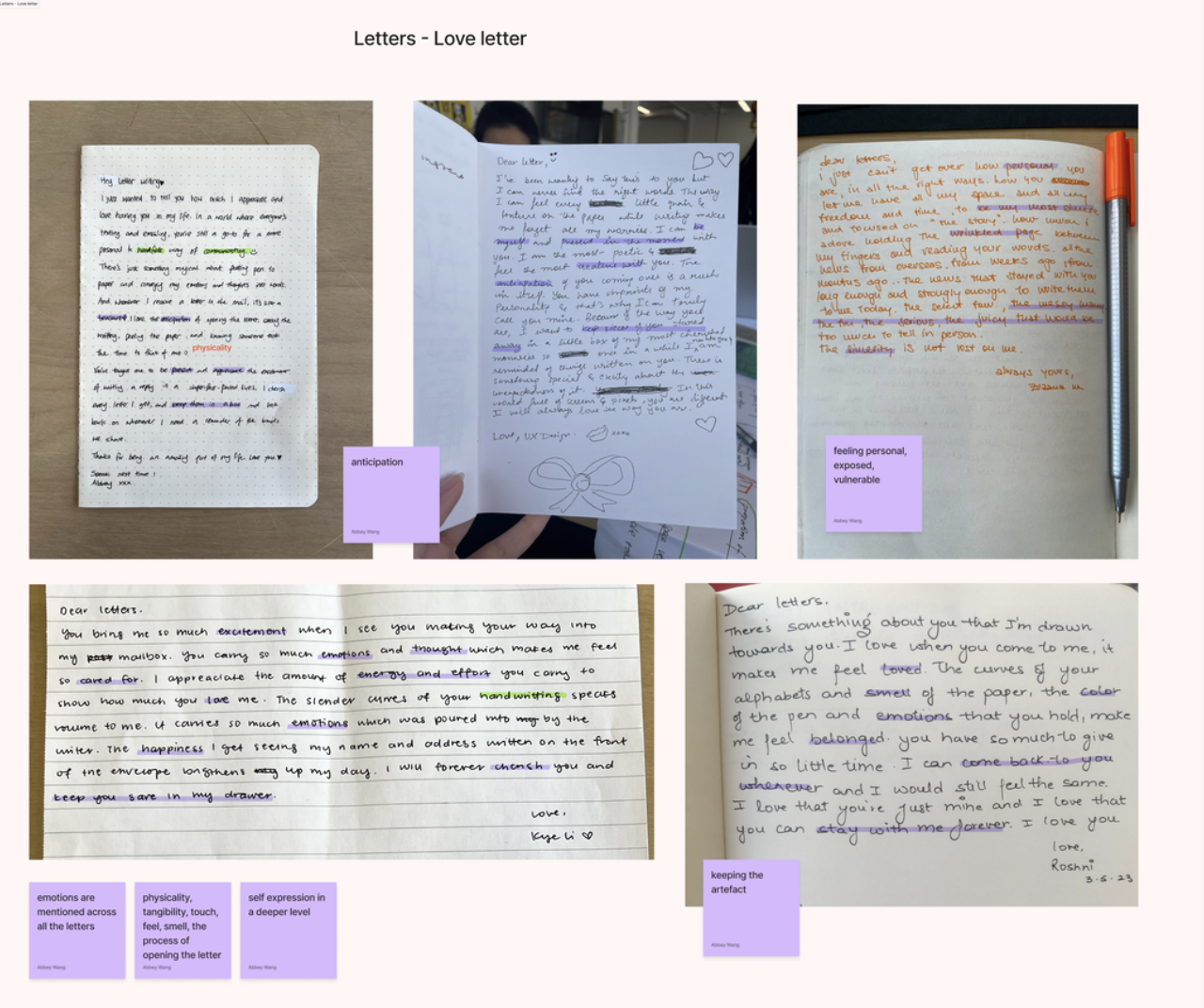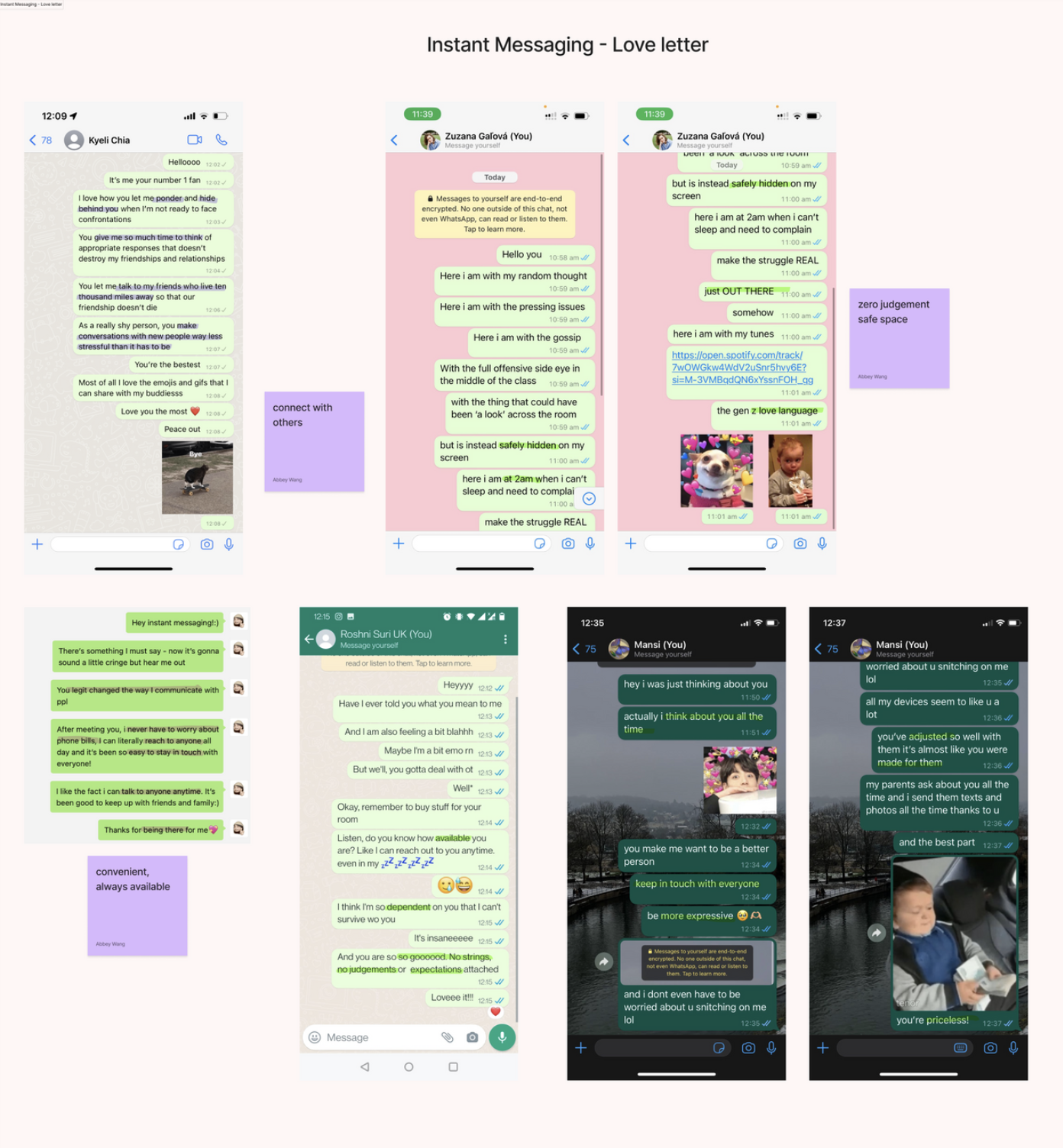Group members:
Mansi Chottani, Kye Li Chia, Yuying Wang (Abbey), Zuzana Galova, Roshni Suri
Brief:
Design and make a new form for a dematerialised artefact
Date:
20th April - 8th June 2023
At the beginning of the week, we divided ourselves into two groups—one focusing on buttons and the other on exploring the concept of self. As part of the self group, we started by creating a mind map of tangible items that we felt represented ourselves. However, we encountered some confusion when attempting the dematerialisation exercise as we noticed that things never fully dematerialised but rather transformed into different forms. To gain clarity, we made a list of dematerialised items and we were particularly interest in the transformation of physical spaces into digital realms and the shift from physical storage to cloud storage.




Following our tutorials with Al, Tonicha, Sophia and Danny, we decided to dive deeper into two dematerialised artifacts: physical storage and physical space. After conducting online research and studying articles on dematerialisation, we became intrigued by the dematerialisation of conversations, specifically the transition from traditional letters to text messages. We realised that physical conversations have shifted from occupying physical spaces to virtual platforms like letters and text messages. These artefacts also exemplify the process of dematerialising physical storage into cloud storage.
Through our directed storytelling, we discovered that letters evoke more personal sentiment and emotion compared to text messages, likely due to the additional time and effort invested in crafting a written letter. The overuse of digital communication (text messages) can diminish the speciality of it.

We explored the gains and losses of letters, text messages and physical conversations using the love letter, breakup letter research method. After analysing the research, we concluded that letters are deeply personal and contains emotions. People appreciate its tangibility, sensory experience of touch and smell as well as the ritual of receiving and opening them. However, writing and delivering letters can be time-consuming, costly and require effort. On the other hand, text messages offer convenience, constant accessibility and easy communication with others. However, they lack the personal touch, can be distracting and at times seem less genuine.






We had a lot of difficulties trying to anchor to one idea and we found so many topics interesting. We keep wanting to combine all the interesting themes together which takes us so much energy and time and it is not a micro practice. We didn’t know what to do with all our thoughts and information and struggled to come up with an idea.
We encountered challenges in focusing on a single idea as we found many topics interesting. We often had the inclination to combine all these themes which consumed significant time and energy, deviating from the micro practice. We struggled to manage our thoughts and information effectively and encountered difficulty in generating a cohesive concept.
Feedback
- Which content of a letter is also present in the instant messaging?
- Scrutiny: when do we use text or mails or postcards?
- How much data does a relationship actually hold?
- How would you turn messages into a box of stuff?
- Materialise the data taken up by messages
- Why can’t we get rid of certain conversations? (hold it close to heart)
- Micro level of just love and hate
- How do people keep text messages?
Reflection:
It is crucial for us to maintain a clear focus and anchor ourselves to a specific topic instead of attempting to incorporate everything. In this case, we will concentrate on the subject of breakup letters.